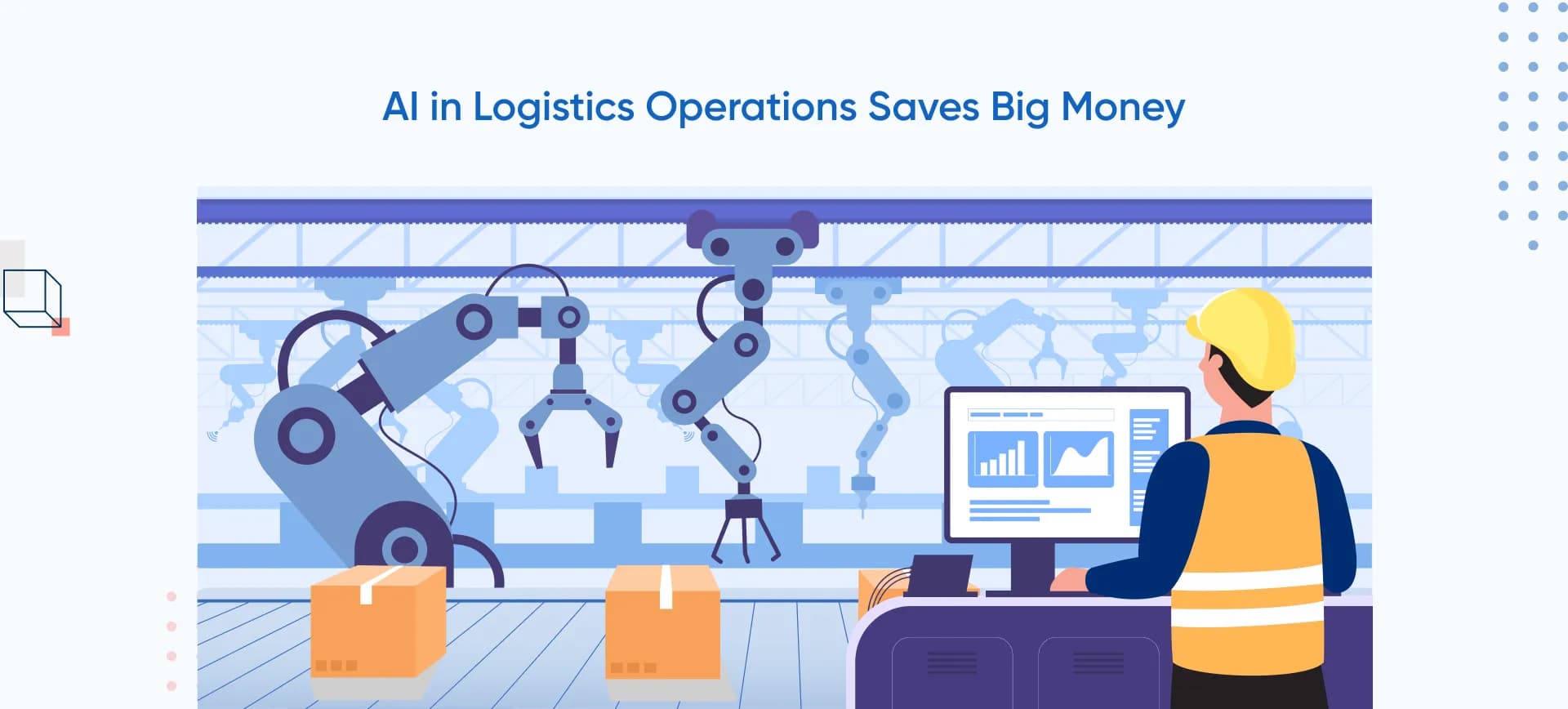The word “AI” is buzzing loudly in every department of every industry. But how can it ease your supply chain issues? How can AI streamline logistics operations and reduce costs? How can it boost last-mile deliveries and deliver top-notch customer experiences? And how does it ease the load from the shoulders of your warehouse workers and create a safer workplace?
If these are the questions you’re looking for answers to, you’ve landed in the right place.
AI is reshaping logistics across every touchpoint from forecasting demand to routing trucks and automating warehouses. Companies using AI are reporting lower fuel usage, leaner inventory, and faster fulfillment, without adding more resources.
But it’s not just about saving money. It’s about building supply chains that adapt, scale, and compete.
In this guide, we’ll break down the key ways AI creates impact, what challenges to expect, and how to implement it correctly, with expert help.
Understanding the role of AI in modern logistics
AI provides a significant competitive advantage in logistics for companies seeking to reduce costs while enhancing service. Artificial intelligence in modern logistics makes supply chains faster, smarter, and more efficient. While machine learning predicts demand and helps optimize delivery routes, computer vision scans barcodes and tracks inventory in real time. AI-powered robots sort and pack products in smart warehouses as natural language processing (NLP) powers chatbots and automates documentation.
Together, these technologies eliminate guesswork, expedite decision-making, and minimize manual effort; the benefits directly reflect in the metrics. McKinsey reports that organizations that deploy AI in their supply chains see significant performance improvements, with:
- Average drop in logistics costs of 15%
- Improvements in inventory by 35%
- Better service levels by 65%
- Error reduction by 20-50%
All of this leads to more savings and increased revenue from a better customer experience. And it’s not just theory. We’ve got real-world results to back up our claims:
- UPS saved over 10 million gallons of fuel and $320 million annually using the AI-powered On-Road Integrated Optimization and Navigation (ORION) platform to optimize delivery routes.
- To ensure that items ordered on Cyber Monday arrive faster, Amazon utilized AI in 2023 to detect and maintain inventory levels 75% more efficiently, while reducing order processing time by 25%.
- DHL's OptiCarton solution optimizes box filling to save up to 50% in shipment space, reduce truck loads, lower shipping costs by up to 35%, and cut carbon emissions.
As AI adoption grows, logistics operations shift from reactive to predictive approaches, enabling businesses to anticipate problems before they occur, operate with far greater precision, and cut operational costs.
How can AI streamline logistics operations and reduce costs
Every delay, detour, or overstock in logistics can inflate costs and dent customer satisfaction. AI helps eliminate these inefficiencies by introducing intelligence into core operations from forecasting demand to optimizing delivery routes and managing warehouse flows.
By leveraging real-time data and machine learning, businesses can move more quickly, reduce waste, and make more informed decisions, directly impacting the bottom line.
Predictive analytics and demand forecasting
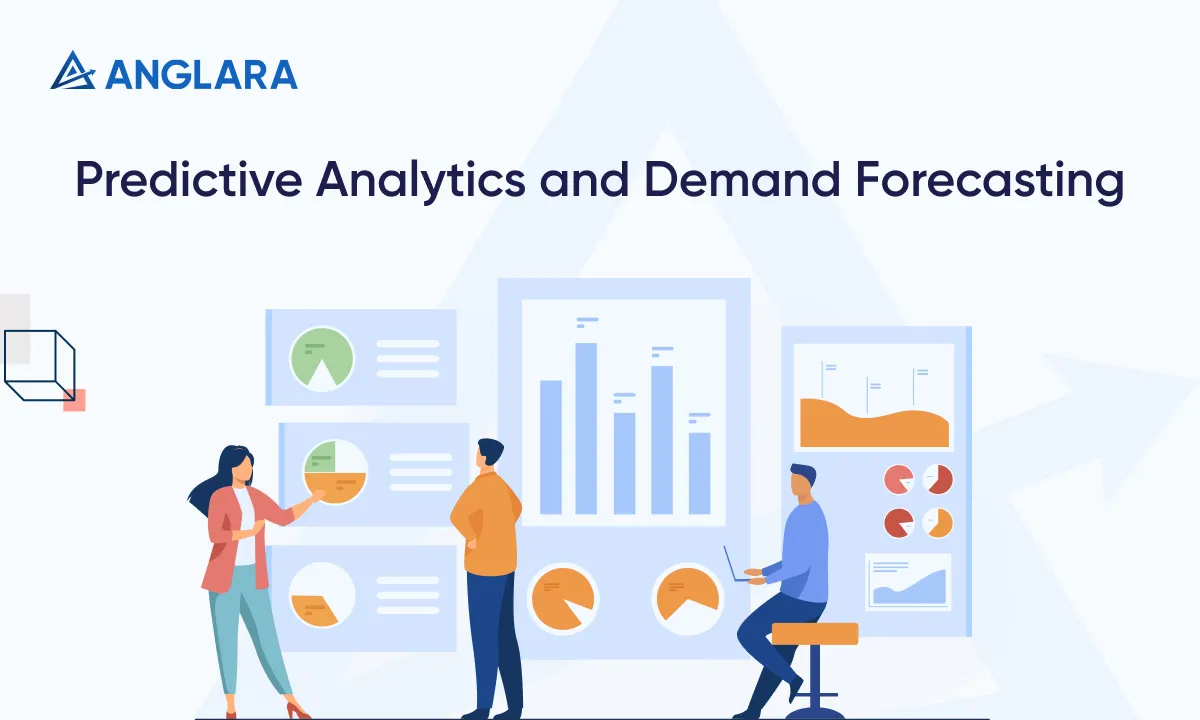
Artificial Intelligence can spot patterns humans may miss. AI models can predict demand with far greater accuracy than traditional methods by analyzing:
- Years of sales data
- Seasonal demand
- Buying behavior
- External signals, such as weather and promotions.
This level of precision gives businesses the confidence to hold leaner inventories while still meeting customer needs, reducing holding costs, avoiding stockouts, and freeing up working capital.
Procurement and production teams also benefit from better demand signals. They can order raw materials on time, plan more efficient production cycles, and avoid costly last-minute fixes. A global food manufacturing company implemented AI demand forecasting and production schedule optimization across eight production lines and 30+ plants over 16 weeks.
Results: 8% improvement in forecast accuracy, nearly $30 million in additional gross margin from better fills, 96% reduction in scheduling time/effort, $1.5 million savings in changeover cost reductions.
It’s no question now that with AI in place, supply chains become more proactive, more stable, and far more cost-effective.
Route optimization and real-time traffic management

Getting from point A to B sounds simple until you're managing hundreds of shipments, unpredictable traffic, and tight delivery windows. That’s where AI steps in.
AI-powered route optimization systems use live traffic data, weather forecasts, delivery constraints, and vehicle loads to recalculate the most efficient route on the fly. Unlike static schedules or manual planning, these systems adjust in real-time, helping fleets avoid delays and meet customer commitments. They update under the hood, without interrupting drivers, to prevent congestion, speed up deliveries, and eliminate unnecessary idle time, resulting in:
- Lesser fuel consumption and reduced emissions
- Shorter delivery cycles and more deliveries per shift
- Fewer driver hours wasted = less cost and better productivity
DHL funded an AI-based routing system to sequence stops to significantly shorten operating times, minimize running costs, and avoid unnecessary kilometers. This system promises faster, more flexible delivery windows and a reduction of up to 20% in fuel consumption for last-mile routes.
Smart inventory and warehouse management
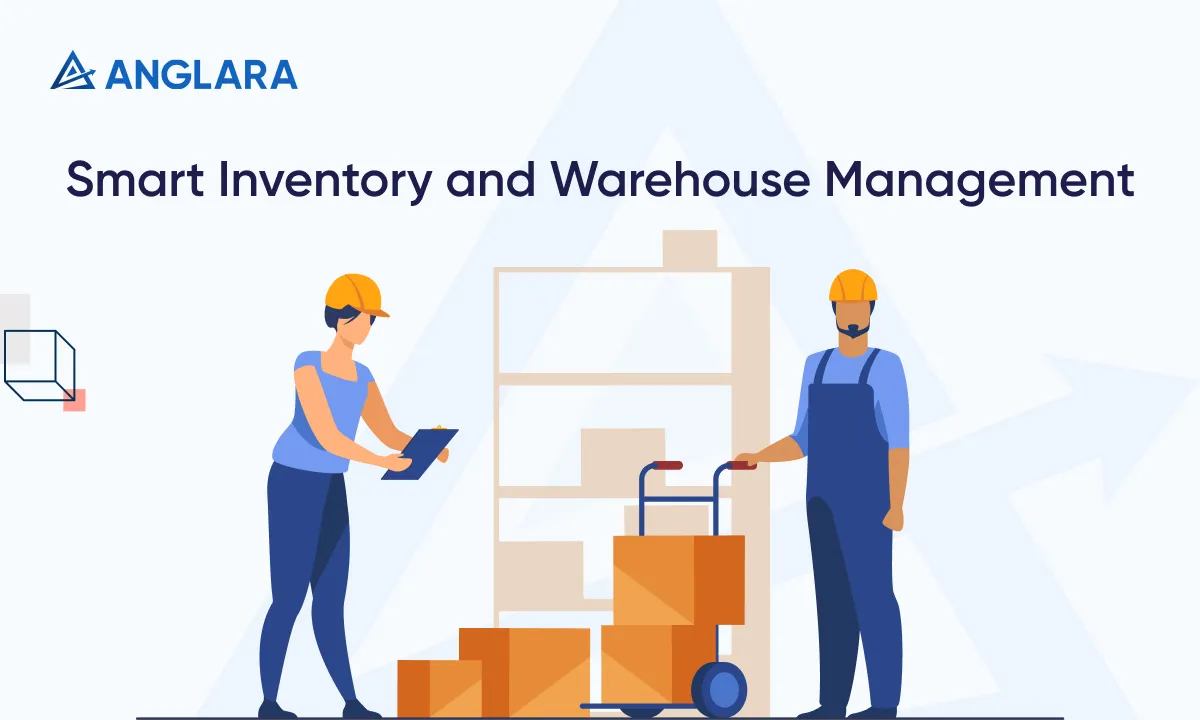
Warehouses are no longer just storage spaces; they can be performance hubs when integrated with artificial intelligence, helping the logistics team to:
- Track inventory in real-time
- Automate warehouse workflows
- Reduce costly errors.
With machine learning algorithms analyzing sales trends, stock levels, and supplier lead times, teams can maintain the optimal amount of inventory without holding excessive amounts or running out of stock.
Result: Lower storage costs, fewer lost sales, and less capital tied up in excess stock.
AI also powers robotics that handle repetitive tasks, such as picking, sorting, and packing. These bots don’t get tired, make fewer mistakes, and keep operations running around the clock, which translates to faster fulfillment, higher order accuracy, and reduced labor dependency. Beyond speed, AI also optimizes space. It can analyze product movement and suggest more effective shelf placements, helping teams achieve more in less square footage.
Here’s a great real-life example: Amazon is deploying over 750,000 AI-powered robots globally, handling tasks like sorting, lifting, and transporting goods. Its latest ‘Vulcan’ robot utilizes AI and touch sensors to handle roughly 75% of warehouse inventory. It operates at speeds comparable to human employees and enhances ergonomics by handling items at challenging heights.
Amazon also has a next-gen fulfillment center in Shreveport, a fully automated facility. It reportedly shows a 25% reduction in warehouse costs due to the combination of AI and robotics. AI and automation are turning warehouses into intelligent systems that drive down cost while raising the bar on efficiency and reliability.
Automated returns and reverse logistics
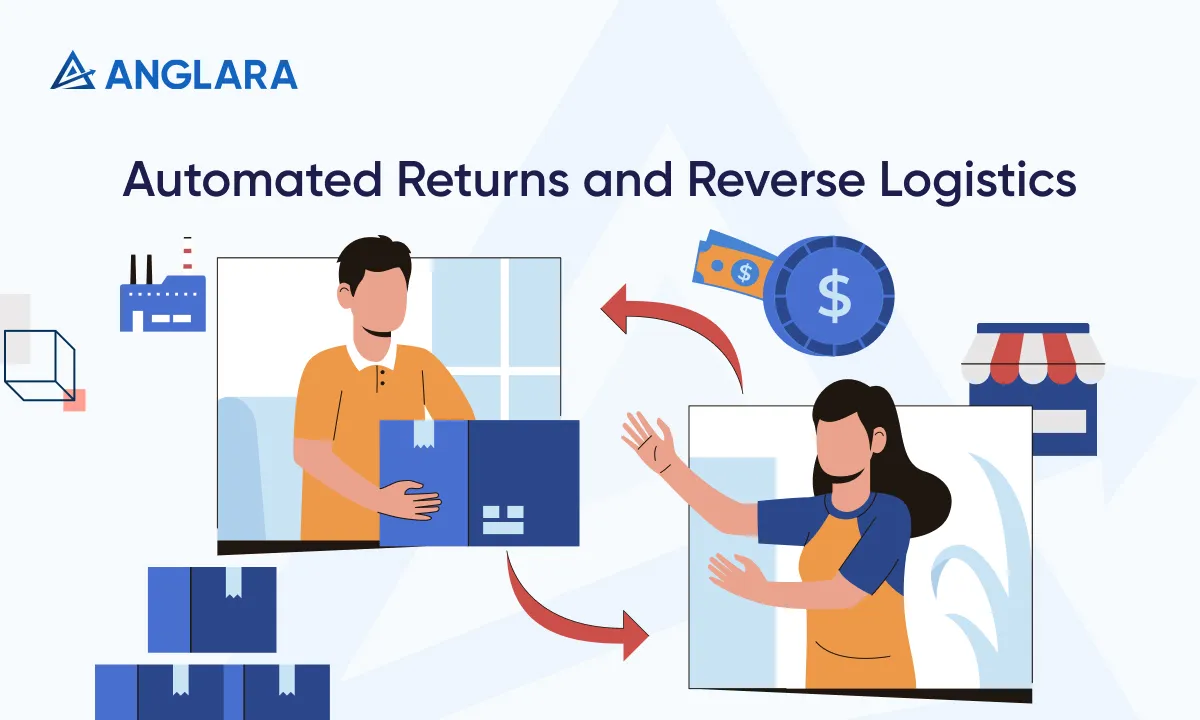
Returns are an unavoidable reality of logistics, and they are costly. Manual inspections, slow restocking, and inefficient routing in reverse logistics can quickly drain resources. AI can change that by automating key steps, helping companies handle high volumes with less friction and lower costs. Here’s how it would work:
- AI models can instantly approve valid returns based on product type, purchase history, and return policies.
- They route returned items to the most efficient facility, whether a local warehouse, repair center, or resale hub.
- Computer vision systems inspect returned goods for damage, streamlining triage decisions without human intervention.
Result: Faster processing, lower labor costs, and quicker value recovery from returned products.
AI also helps reduce returns before they happen. By analyzing return patterns, it can flag issues, such as products with sizing discrepancies or misleading descriptions, and trigger proactive fixes on the product page or packaging.
On the customer side, AI makes the return experience smoother. Virtual assistants can guide users through the process, provide real-time updates, and even assist with scheduling pickups, boosting satisfaction without overburdening support teams.
When implemented correctly, AI in reverse logistics transforms a cost center into a competitive advantage, resulting in less waste, increased efficiency, and happier customers.
Predictive maintenance for fleet and equipment
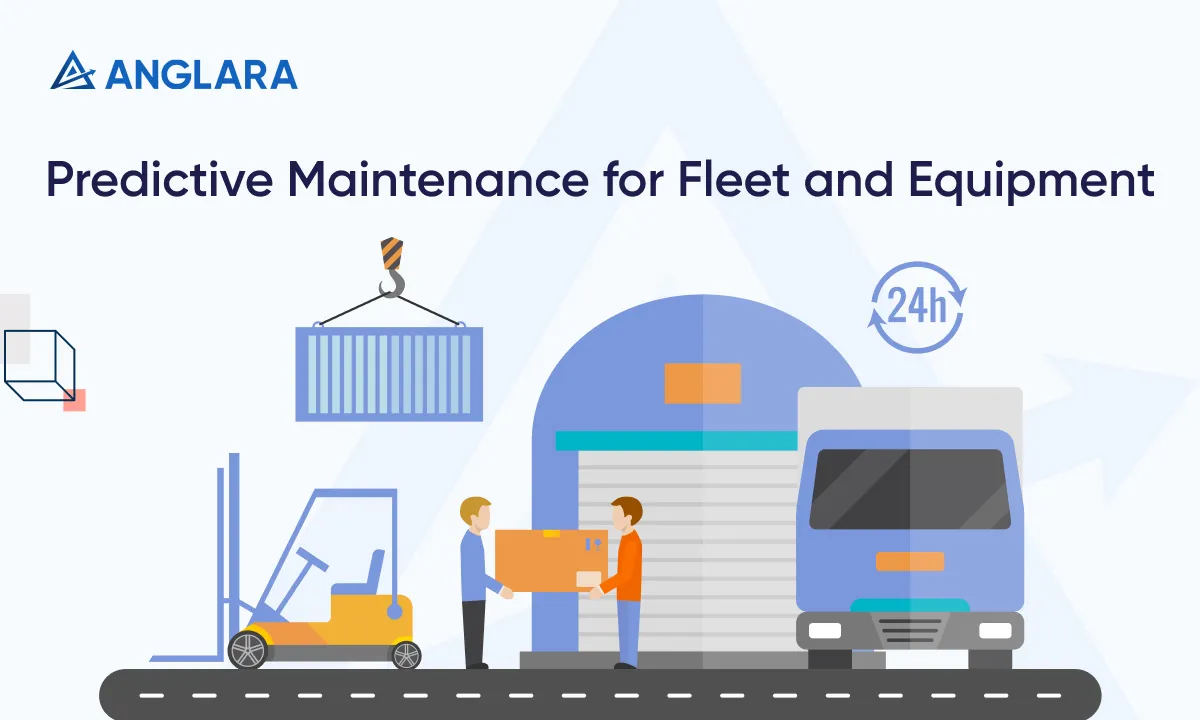
Unexpected breakdowns in trucks, cranes, or warehouse machinery can bring logistics operations to a grinding halt. Enter AI’s another superpower: predictive maintenance.
AI systems continuously monitor equipment health using sensor data. They analyze variables such as engine temperature, tire pressure, vibration patterns, and oil levels. As sensors monitor real-time operational data, AI models learn what normal behavior looks like and flag issues as soon as patterns deviate from the norm.
With this information, these systems can predict faults, such as a worn brake or an overheating engine, and trigger maintenance long before failures occur and the problem disrupts operations. This enables maintenance teams to:
- Plan service during off-peak hours
- Combine multiple fixes into scheduled sessions
- Order parts in advance, avoiding delays
Results: Up to 25% reduction in maintenance costs, a 20 to 40% lifespan boost for the vehicle, 35% reduced downtime, and 70% fewer breakdowns to keep fleets and machinery running.
Overall, predictive maintenance powered by AI isn’t just smart troubleshooting; it’s proactive asset management. When logistics gear runs without surprise failures, cost per delivery drops, customer satisfaction rises, and your operation runs leaner and longer.
Overcoming challenges in AI implementation
While the benefits of AI in logistics are clear, implementation often feels like a minefield with data security risks, resistance to change, and legacy systems. These challenges can stall progress before it even starts.
And here’s the truth: this doesn’t work without the right partner. AI in logistics is not a DIY job. You need a team that understands both the technical landscape and the nuances of supply chain operations. That’s what makes working with an experienced expert like Anglara so critical.
Here are some common AI implementation challenges and ways we can help logistics teams overcome them with clarity and confidence:
- Data privacy and security are top concerns: AI systems process everything from customer addresses to real-time fleet locations. Without safeguards, that data becomes a liability. At Anglara, we bake security into every layer, utilising encryption, access control, and compliance checks that meet global standards, such as GDPR and CCPA. Our clients never have to choose between innovation and trust.
- Workforce adaptability is another common hurdle: New tech can intimidate even the most experienced teams. Employees may even worry that AI and automation will replace their jobs or drastically change their roles. So, the first part of combating this challenge is to affirm to your employees that AI doesn’t replace your people; it makes their jobs easier. As your development partner, we deliver intuitive tools, hands-on training, and fast feedback loops so teams feel supported, not sidelined.
- Lastly, many projects break down during system integration: Logistics stacks are complex. When you’ve got legacy WMS, custom-built ERPs, and years of patchwork processes, replacing them isn’t always feasible. That’s why experts at Anglara build AI solutions designed to plug into your existing infrastructure. Whether it’s custom connectors, APIs, or lightweight overlays, we make the tech fit your reality.
At Anglara, we bridge the gap between what's possible and what works — fast, secure, and built for your business. Ready to streamline logistics operations and reduce costs with AI without worrying about the implementation headaches? Schedule a consultation with our team, and we’ll take over from there.
Frequently asked questions
How does AI help reduce logistics and supply chain costs?
AI cuts costs by optimizing routes, improving demand forecasts, automating warehouses, and reducing manual errors, making operations faster and leaner.
What are the most common AI technologies used in logistics operations?
Machine learning, computer vision, natural language processing, predictive analytics, and AI-powered robotics are the key technologies reshaping logistics today.
Can small and medium logistics companies afford to implement AI?
Yes. Anglara offers solutions built on cloud-based and modular AI tools that are affordable and scalable, letting SMBs start small and grow as ROI becomes clear.
How accurate is AI in demand forecasting compared to traditional methods?
AI-driven forecasts are 30 to 50% more accurate by analyzing real-time, multi-source data, resulting in fewer stockouts and lower inventory waste.
What role does AI play in route optimization?
AI finds the fastest, most fuel-efficient delivery paths by adjusting to real-time traffic, weather, and delivery windows.
How can AI improve warehouse management efficiency?
AI streamlines picking, packing, and stock management to reduce errors, improve order speed, and optimize space and labor usage.
What is predictive maintenance, and how does it apply to logistics?
AI predicts equipment failures before they happen, helping schedule timely maintenance, reduce downtime, and extend asset lifespan.
How long does it typically take to see ROI from AI in logistics?
Most companies begin seeing measurable ROI within 6 to 12 months, especially in forecasting, routing, and warehouse automation.
What challenges do companies face when integrating AI into their logistics operations?
Common challenges include data security, employee adoption, and integrating AI with legacy systems, but all are solvable with expert support.
Can AI help improve customer satisfaction in logistics services?
Yes. AI improves delivery accuracy, speeds up support, automates tracking, and reduces errors, making for a smoother customer experience.
How does AI contribute to sustainability in logistics?
AI reduces fuel use, cuts waste, and optimizes packaging and transport, lowering the environmental impact across the supply chain.
What kind of data is needed for AI to be effective in logistics?
AI needs clean, relevant data like historical orders, fleet info, inventory levels, and real-time inputs from sensors or tracking tools.
Is AI in logistics secure and compliant with data regulations?
Yes, when properly implemented. Anglara ensures secure AI systems with encryption, access control, and compliance with regulations like GDPR and CCPA.
What industries benefit most from AI-driven logistics?
Retail, eCommerce, manufacturing, healthcare, and 3PLs see the most significant gains, but any industry with a supply chain can benefit.
How can Anglara support businesses in adopting AI for logistics?
Anglara offers end-to-end AI services, from strategy to deployment, tailored for logistics teams, with deep technical and operational expertise.



